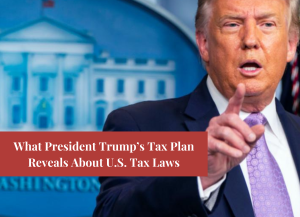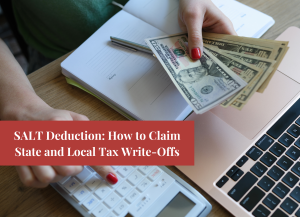A Quick Background on Vehicle Deductions
As a small business owner, choosing the right vehicle doesn’t just affect your day-to-day operations — it can dramatically impact your tax bill.
In 2025, you have two major tools to deduct vehicle costs:
-
Section 179
-
Bonus Depreciation
And thanks to the latest GOP tax law, bonus depreciation is back at 100%, creating an opportunity window that’s powerful if used strategically.
But whether you’re an Uber driver, real estate investor, contractor, or S Corp owner, the way your vehicle is used, structured, and classified makes all the difference.
Let’s break it all down.
1. What Is Section 179?
Section 179 allows you to deduct the full purchase price of qualifying business equipment — including vehicles — in the year it’s placed in service.
Section 179 Vehicle Rules for 2025:
-
Up to $1,220,000 deduction (phases out after $3,050,000 in total purchases)
-
Vehicle must be used over 50% for qualified business use
-
Heavy SUVs (6,000–14,000 lbs GVWR) have a special limit: $31,300 for 2025
-
Work trucks and vans over 14,000 lbs: full deduction allowed
🚧 This deduction applies before any bonus depreciation is calculated.
2. Bonus Depreciation in 2025 (Now 100% Again)
The new tax bill reinstates 100% bonus depreciation retroactively to January 1, 2025 and extends it through 2029.
This allows you to deduct 100% of the remaining vehicle cost (after Section 179) in year one — as long as the asset is new or used and placed in service within the year.
This combo (179 + Bonus) is incredibly powerful for eligible vehicles.
3. The 6,000 lb Rule: Why It Matters
The Gross Vehicle Weight Rating (GVWR) determines how favorable your deduction is.
| Vehicle Weight | Deduction Rules |
|---|---|
| Under 6,000 lbs | Luxury auto limits apply (capped at ~$20,000 in year 1) |
| 6,001–14,000 lbs | Eligible for Section 179 ($31,300 cap) + Bonus Depreciation |
| Over 14,000 lbs | Full 179 + Bonus Depreciation — no cap |
Note: Even with 100% bonus depreciation, cars under 6,000 lbs are still subject to Section 280F “luxury auto” limits.
4. Real-World Examples (2025 Law in Action)
Example 1: Uber Driver Buys a 2025 Chevrolet Tahoe ($75,000)
-
GVWR: 6,300 lbs → qualifies as a heavy SUV
-
Section 179 deduction: $31,300
-
Bonus depreciation: $43,700
-
Total deduction: $75,000
If they earn $100K and show a $75K deduction, their net Schedule C income drops to $25K — which reduces both income tax and self-employment tax significantly.
This loss can even offset W-2 income on a joint return.
Example 2: Contractor Buys a Work Van ($80,000, 14,500 lbs GVWR)
-
GVWR over 14,000 lbs → not considered a passenger SUV
-
Full Section 179 deduction: $80,000
-
No bonus needed
This creates a large Schedule C loss that can carry over or offset other income.
Example 3: Freelancer Buys a Toyota Corolla ($40,000, under 6,000 lbs)
-
Luxury auto caps apply (Section 280F)
-
Max first-year deduction: ~$20,200 (with 100% bonus depreciation)
Even with bonus depreciation, the cap limits how much is deductible in year one.
5. How Vehicle Losses Can Offset W-2 Income
Here’s the big play: if you’re a sole proprietor or single-member LLC reporting on Schedule C, your business losses — including vehicle deductions — can offset W-2 income on your 1040.
This is powerful for:
-
Freelancers with day jobs
-
Uber/Lyft drivers
-
Contractors with side businesses
It’s also why accurate mileage logs and usage records matter.
6. Electing S Corp Status & Maximizing Deductions
For businesses that grow, electing S Corp status can offer payroll tax savings — but be strategic.
Here’s the best approach:
S Corp Vehicle Strategy:
-
Elect your LLC to be taxed as an S Corp
-
Pay yourself a reasonable salary
-
Deduct mileage or lease payments through an accountable plan
-
Purchase a vehicle under your name or the company, depending on usage
-
Combine Section 179 + Bonus Depreciation on qualifying vehicles
Use the vehicle cost to offset your S Corp profits — then take tax-free K-1 distributions up to your basis.
Choose Strategically, Deduct Confidently
Not every vehicle purchase is treated the same — and not every deduction is automatic.
In 2025, business owners have a window of opportunity to:
-
Deduct larger amounts
-
Offset both self-employment and W-2 income
-
Use smart entity structuring to lower overall tax burden
But these strategies only work if you track your usage, classify the vehicle properly, and structure your business correctly.
Taxfully helps business owners build strategies like this all year round.





